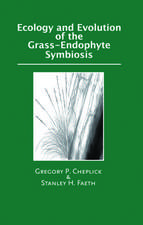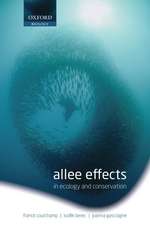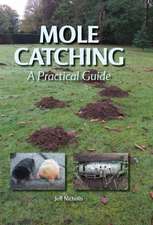Tools for Land Use Analysis on Different Scales: With Case Studies for Costa Rica: System Approaches for Sustainable Agricultural Development, cartea 8
Editat de B.A.M Bouman, Hans G.P. Jansen, Robert A. Schipper, Huib Hengsdijk, André Nieuwenhuyseen Limba Engleză Paperback – 3 oct 2013
This book offers a detailed account of a range of interdisciplinary methodologies for land use analysis, developed over a twelve-year period (1986-1998) in Costa Rica, through collaborative research between three institutions: one from the North (Wageningen Agricultural University of The Netherlands), and two from the South (the Tropical Agricultural Research and Higher Education Center [CATIE] and the Ministry of Agriculture and Livestock [MAG]). The methodologies span a number of spatial scales, ranging from the field level all the way to the national level. Concepts of systems analysis and information technology play a pivotal role in each of the methodologies. Together, they form a unique toolbox that deserves ample use in the process of agricultural policy design.
| Toate formatele și edițiile | Preț | Express |
|---|---|---|
| Paperback (1) | 944.19 lei 43-57 zile | |
| SPRINGER NETHERLANDS – 3 oct 2013 | 944.19 lei 43-57 zile | |
| Hardback (1) | 794.43 lei 38-44 zile | |
| SPRINGER NETHERLANDS – 30 sep 2000 | 794.43 lei 38-44 zile |
Preț: 944.19 lei
Preț vechi: 1151.45 lei
-18% Nou
Puncte Express: 1416
Preț estimativ în valută:
180.67€ • 189.14$ • 149.49£
180.67€ • 189.14$ • 149.49£
Carte tipărită la comandă
Livrare economică 07-21 aprilie
Preluare comenzi: 021 569.72.76
Specificații
ISBN-13: 9789401057912
ISBN-10: 9401057915
Pagini: 288
Ilustrații: IX, 274 p.
Dimensiuni: 160 x 240 x 15 mm
Greutate: 0.41 kg
Ediția:Softcover reprint of the original 1st ed. 2000
Editura: SPRINGER NETHERLANDS
Colecția Springer
Seria System Approaches for Sustainable Agricultural Development
Locul publicării:Dordrecht, Netherlands
ISBN-10: 9401057915
Pagini: 288
Ilustrații: IX, 274 p.
Dimensiuni: 160 x 240 x 15 mm
Greutate: 0.41 kg
Ediția:Softcover reprint of the original 1st ed. 2000
Editura: SPRINGER NETHERLANDS
Colecția Springer
Seria System Approaches for Sustainable Agricultural Development
Locul publicării:Dordrecht, Netherlands
Public țintă
ResearchCuprins
1 Introduction.- 1.1.- 1.2 Choosing between methodologies.- 1.3 Methodologies for land use analysis.- 1.4 Outline of the book.- 2 The physical and socio-economic setting: the northern Atlantic Zone of Costa Rica.- 2.1 Introduction.- 2.2 Geology and geomorphology.- 2.3 Climate.- 2.4 Soils.- 2.5 Land use.- 2.6 Farm structure.- 2.7 Macro-economic and agricultural policy.- 2.8 Social and institutional factors.- 2.9 Issues Affecting Sustainability.- Appendix 2.1.- 3 Using the CLUE framework to model changes in land use on multiple scales.- 3.1 Introduction.- 3.2 Methods and materials.- 3.4 Results.- 3.5 Conclusions and discussion.- Appendix 3.1.- Appendix 3.2.- Appendix 3.3.- 4 Spatial equilibrium modeling for evaluating inter-regional trade flows, land use and agricultural policy.- 4.1 Introduction.- 4.2 Main agricultural policies in Costa Rica after 1980.- 4.3 Regional analysis and commodity selection.- 4.4 Methodology.- 4.5 Model results.- 4.6 Summary and conclusions.- Appendix 4.1.- 5 Technical Coefficient Generators for quantifying land use systems.- 5.1 Introduction.- 5.2 Concepts involved in the generation of technical coefficients.- 5.3 PASTOR.- 5.4 LUCTOR.- 5.5 Examples.- 5.6 Conclusions.- 6 Integrated biophysical and socio-economic analysis of regional land use.- 6.1 Land use analysis.- 6.2 Application of SOLUS to the AZ.- 6.3 Land use scenarios.- 6.4 Conclusions.- Appendix 6.1.- 7 Exploring future land use options: combining biophysical opportunities and societal objectives.- 7.1 Introduction.- 7.2 Concepts and methodology of exploring biophysical land use options.- 7.3 The methodology applied to the northern Atlantic Zone.- 7.4 Results.- 7.5 Incorporating economic constraints: implications for land use options.- 7.6 Discussion and conclusions.- Appendix 7.1.- 8 Farm modeling for policy analysis on the farm and regional level.- 8.1 Introduction.- 8.2 Stakeholders and the policy priorities for regional development.- 8.3 Methodology and specification of partial models for individual farm types in the Atlantic Zone.- 8.4 Partial and aggregate simulation methodology.- 8.5 Model implementation and results.- 8.6 Conclusions and discussion.- 9 Linking information technology and farmer knowledge in a decision support system for improved banana cultivation.- 9.1 Introduction.- 9.2 The Costa Rican banana sector.- 9.3 A decision support system for precision agriculture in banana management.- 9.4 Application of precision agriculture at the Rebusca banana plantation.- 9.5 Discussion and conclusion.- 10 A toolbox for land use analysis.- 10.1 Introduction.- 10.2 Scope and terminology of land use analysis.- 10.3 Spatial scales and aggregation issues.- 10.4 Complementarity of methodologies.- 10.5 Sustainability issues.- 10.6 User involvement in land use analysis.- 10.7 Conclusions.- References.- Abbreviations.- Concepts and definitions employed in land use analysis.- to the CDROM.- Authors’ affiliations.
Recenzii
`The volume does a great job of demonstrating that established and tested techniques continue to be used in new and exciting ways. The strength of this volume lies in its thorough treatment of a number of land-use and land-cover change modelling topics from a policy-oriented view. ... This book is therefore valuable to professionals working in the field and useful to researchers embarking on their own land-use or sustainability projects. Finally, it offers one of the relatively few examples of research projects that successfully use technology to integrate across academic disciplines at multiple spatio-temporal scales.'
JASSS, 5/4 (2002)
JASSS, 5/4 (2002)
























